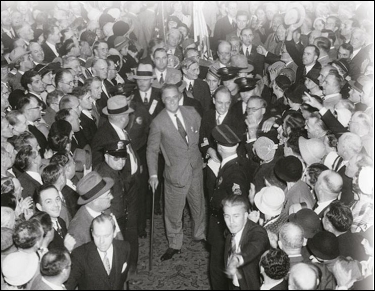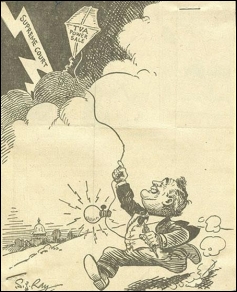

-As shown in both the photograph of Franklin D. Roosevelt taken during the 1932 presidential campaign and the 1936 political cartoon from the Kansas City Star depicting a sprinting Roosevelt, why did FDR impose self-censorship on being photographed or depicted in his wheelchair?
Definitions:
Sensation
Sensation is the process by which our sensory receptors and nervous system receive and represent stimulus energies from our environment.
Mean
A statistical measure representing the average of a set of numbers, calculated by dividing the sum of all values by the number of values.
Parsimonious Theory
A theory that explains phenomena in the simplest way possible, using the fewest possible assumptions or variables.
Scientists
Professionals engaged in systematic activities to acquire knowledge that describes and predicts the natural world, typically through observations and experiments.
Q4: The successful passage of the initiative, referendum,
Q7: The ostentatious costumes worn by guests, such
Q7: This 2015 photograph of an illuminated White
Q12: How does this image depict the economic
Q14: How does Jessie Willcox Smith's illustration from
Q17: The White House reacted to President Wilson's
Q28: How does the image of poverty in
Q36: Charles Russell's painting The Herd Quitters could
Q42: What made the 1864 Sand Creek Massacre
Q46: The word gild in the term Gilded